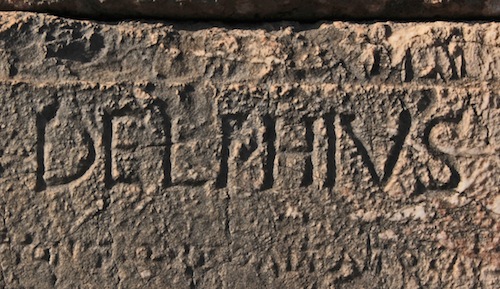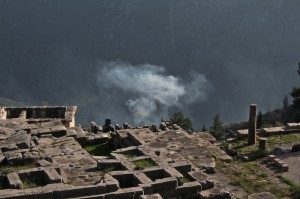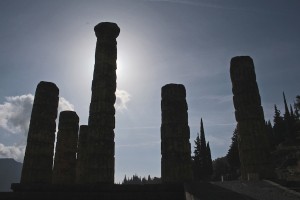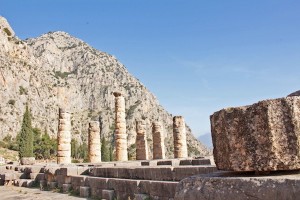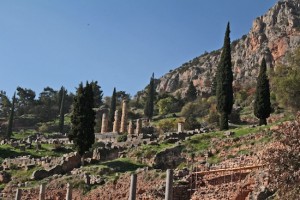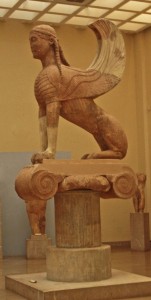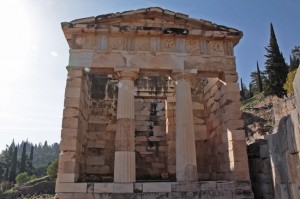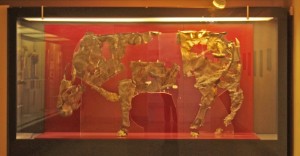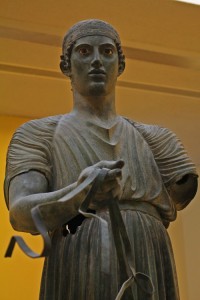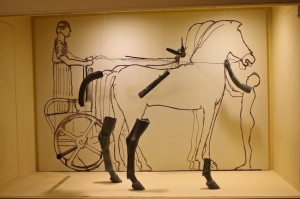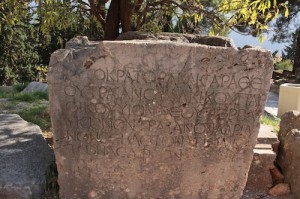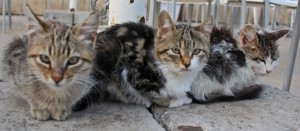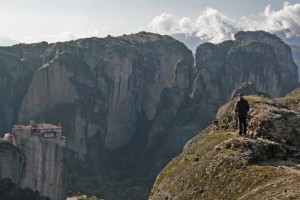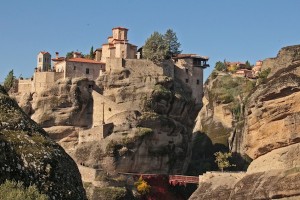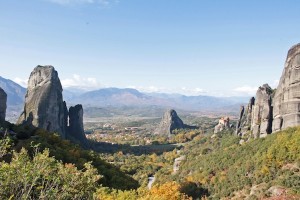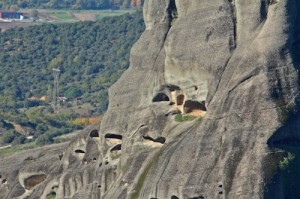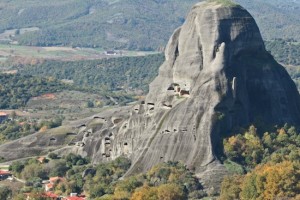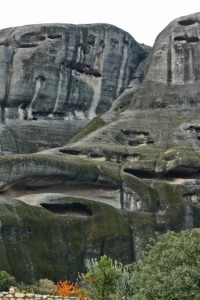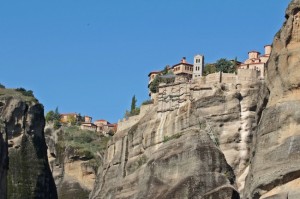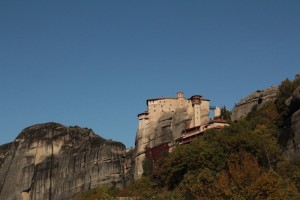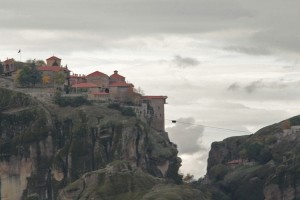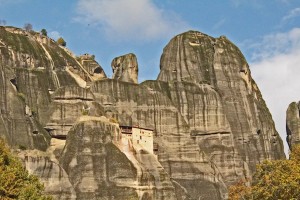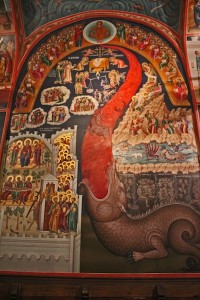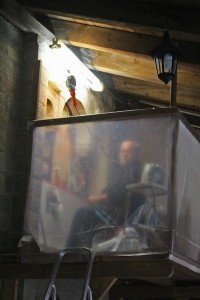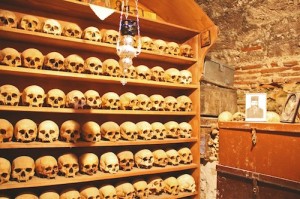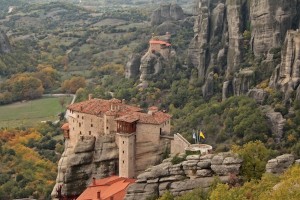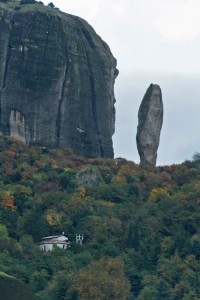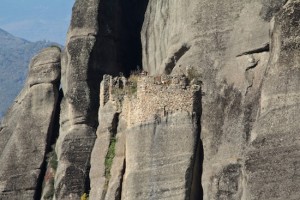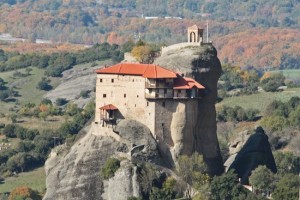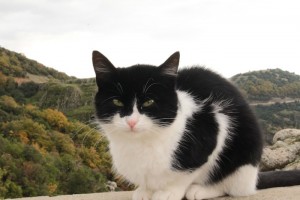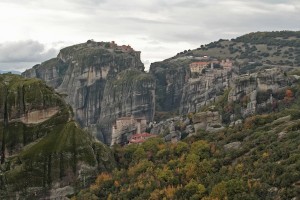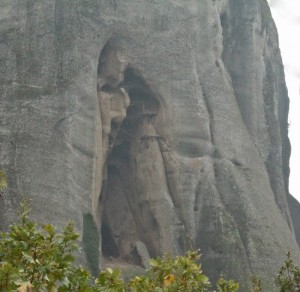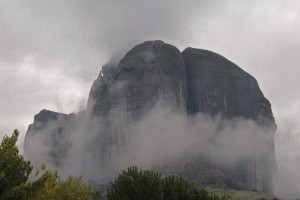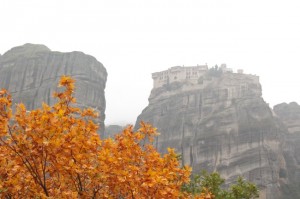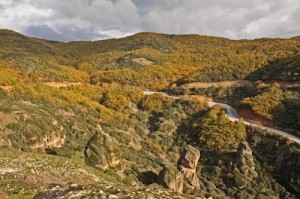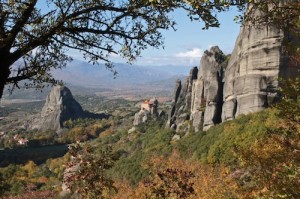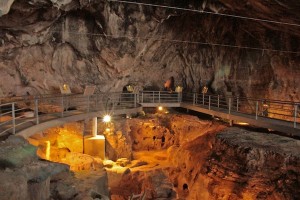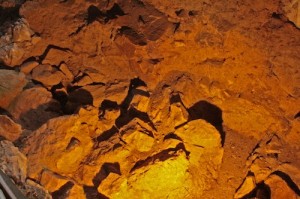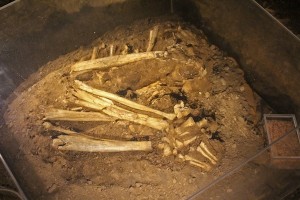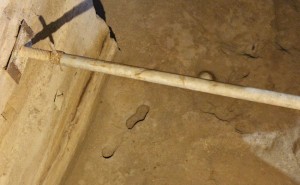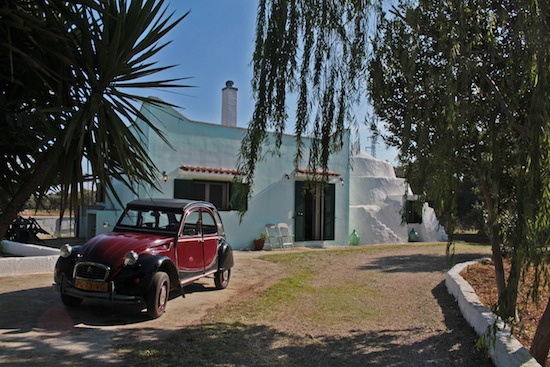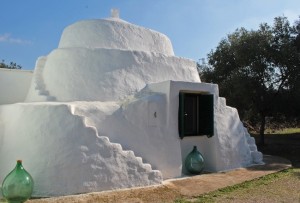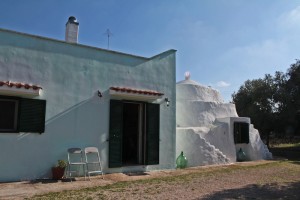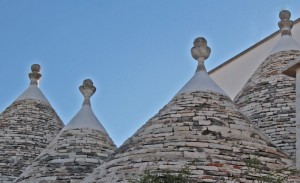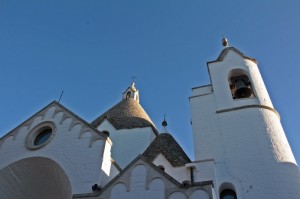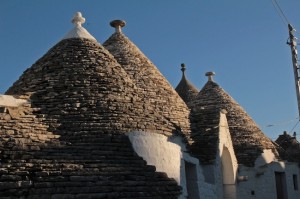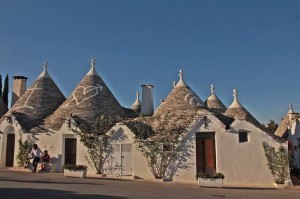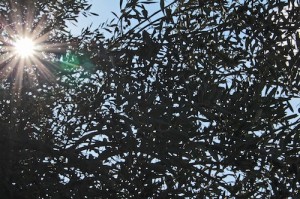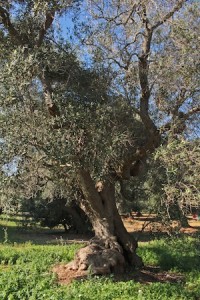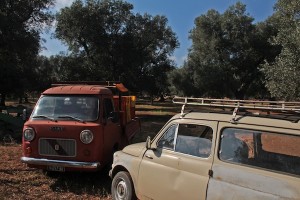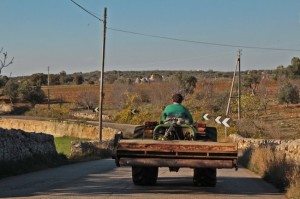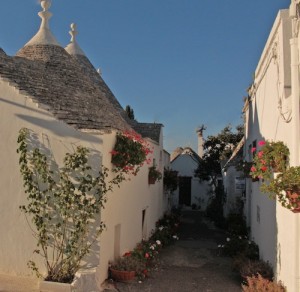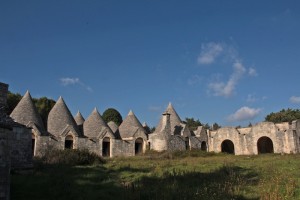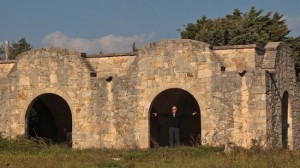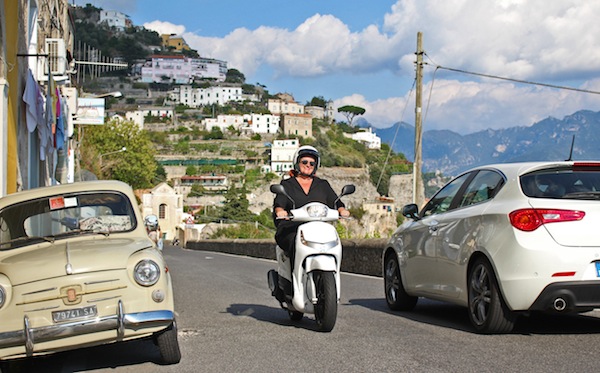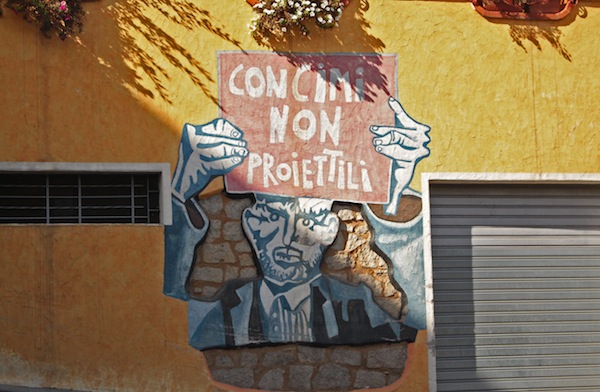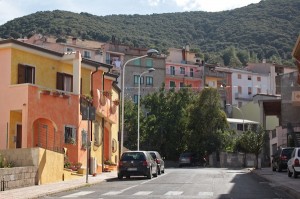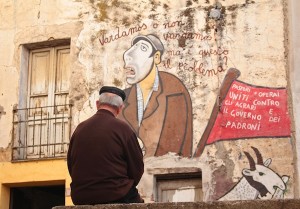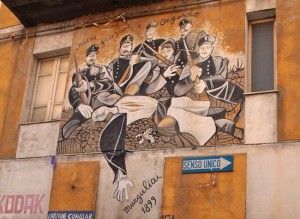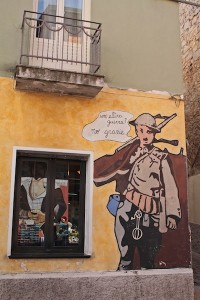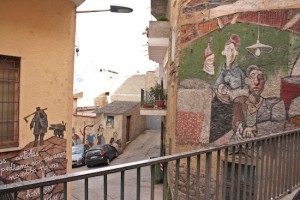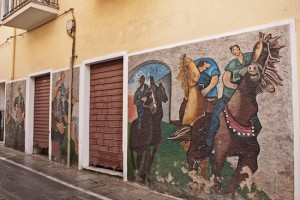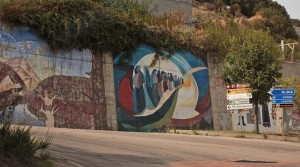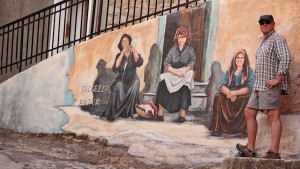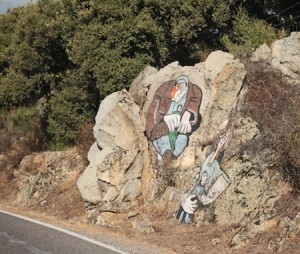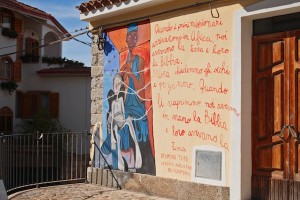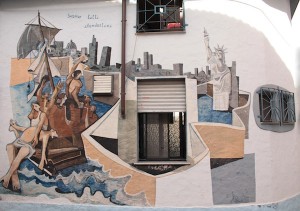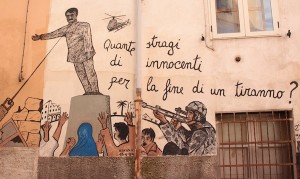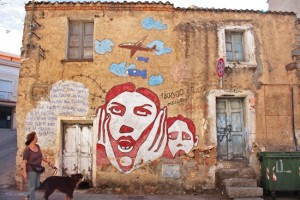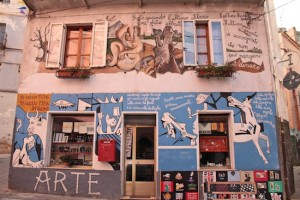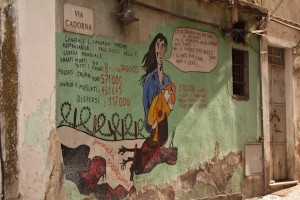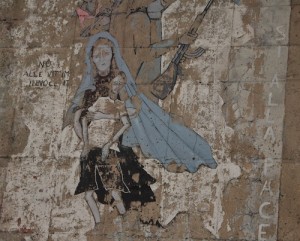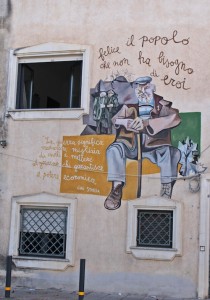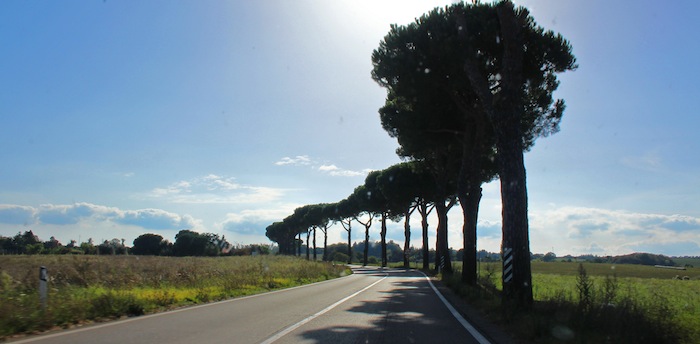Italy gave us a wonderful welcome when we arrived for the first time with our beautiful breakdown in March, and our second visit is giving just as much delight, but considerably less mechanical trouble!
We travelled by motor rail to Livorno – the same town we sailed into from Morocco six months ago. This time we immediately headed south.
We spent the day driving through chianti country, passing great cities such as Orvieto, a favourite of the popes during difficult times because of its position high on an escarpment.
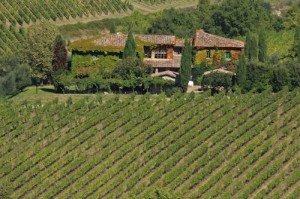
Ivy and vines combine
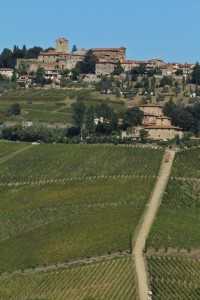
In the Chianti region all roads lead to a vineyard
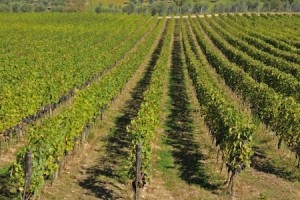
Vines heavy with grapes as far as the eye can see in Chianti
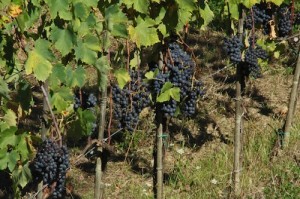
Where chianti begins
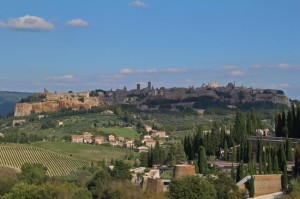
Orvieto on its hillside pedestal
While Italy has of course created some beautiful machines, like Geoff’s favourite Ducati motorbike, it is the art that is even more memorable. Mark Twain once said that God made Italy from designs by Michelangelo. In Florence many of Michelangelo’s most famous works are on display inside and outside some of the great palaces and museums of the city.
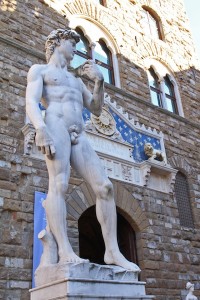
The copy of David, standing where the real thing was originally placed
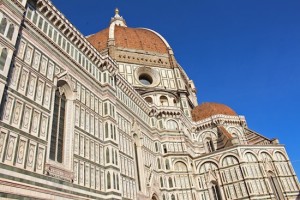
The magnificent duomo of Florence
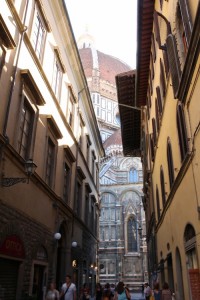
The Florence duomo looms large wherever you look
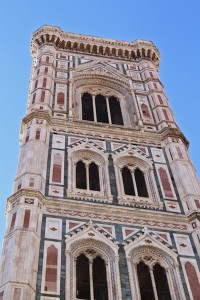
The campanile in Florence
But he is not alone. Some of the most famous artists of the Renaissance period plied their trade and left their mark in Italy. You don’t have to queue to see it either – the Loggia dei Lanzi is a free, open-air gallery next to the Uffizi museum with works like this from Cellini, who reputedly burned his own furniture to get the furnace hot enough to melt the bronze for his statue of Perseus!
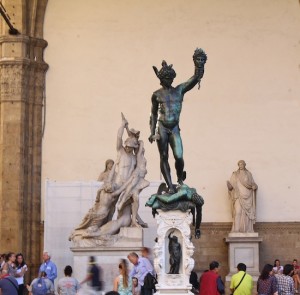
Great art in an open air museum in Florence
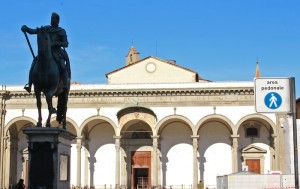
Grand Duke Ferdinand Medici riding high in Florence
Giambologna’s famous Rape of the Sabine was chiselled from a single piece of white marble – apparently the largest single piece of stone brought to Florence at the time and the first sculpture specifically designed to be looked at from many different perspectives, rather than a single point of view. The word rape in ancient times did not have the same meaning as it does today. It meant capture or kidnap – admittedly also not good – and the statue tells the story of how Romulus and his male followers kidnapped women from the rival Sabine tribe in order to populate Rome.
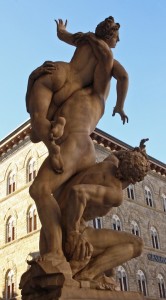
The rape of the Sabine sculpture in Florence
The “white giant” as the Neptune fountain by Ammannati was rather unflatteringly called when it was first unveiled, has a history of misfortune is Florence. It has been repeatedly vandalised even in recent times and in ancient times was used as a giant laundry bowl. Not really the fate that great art should suffer.
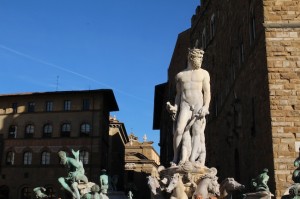
Neptune has had some bad luck in Florence
In truth we preferred the smaller, yet elegant Siena to Florence. Siena sits high on a hill and even though perhaps is most noted for the insane horse race run twice a year in the summer around the small central piazza.
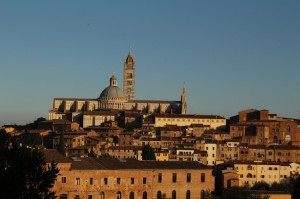
Siena skyline, including the magnificent duomo
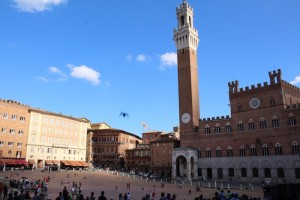
Siena’s main square is actually shell-shaped and flows downward towards the palazzo

Siena’s duomo, or cathedral, is vast
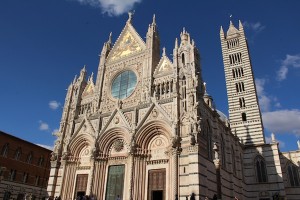
Siena’s cathedral, or duomo, is a lavish affair
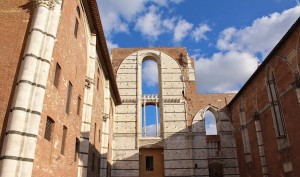
Siena’s cathedral would have been the largest in the world, if they had finished it. This is the leftover end wall
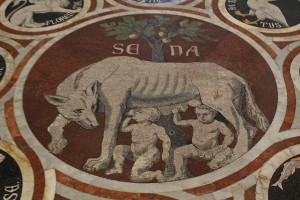
Siena was founded according to legend, by the son of Remus, slain by his brother Romulus – who went on to build and name Rome
There are ten local teams, each with their distinctive flags, who compete in the Palio. The jockeys and horses are only selected during the practise session the days before the race. On race day, the little piazza is crammed with spectators, from every window and balcony and in the centre of the square.
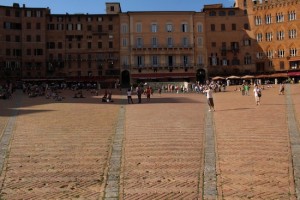
Siena’s piazza is divided into nine sections to form a shell-shaped space
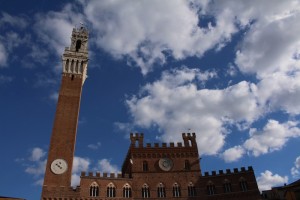
Siena’s palazzo marks the start and end of the race
The Palio lasts a mere 90 seconds, and there are no rules. Beating rival horses and jockeys is common and has prompted calls for the centuries old tradition to be ended, but the local vested interests as too great for that to happen anytime soon.
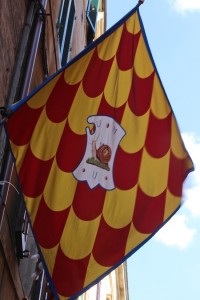
Siena’s snail team is doing surprisingly well in the annual horse race
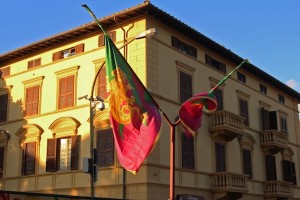
Siena’s flags are never lowered
It was a very different sport that we encountered after leaving Siena. We spent two days at the Lake Bolsena, happening across the World Carp Fishing competition.
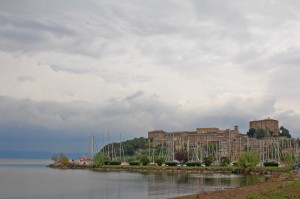
Bolsena
And they are just as serious as any horse racer! The lake has two small islands in the centre – the larger – Bistenia housed a prison for heretics but is now owned by Princess Beatrice Spada Potenziani!
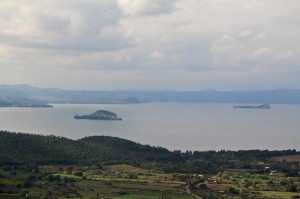
Lake Bolsena is one of the largest volcanic lakes in Europe
There was no sign of any eruptions during our visit, the glassy smooth surface was a treat for us and the fishermen – and carpe diem they did!
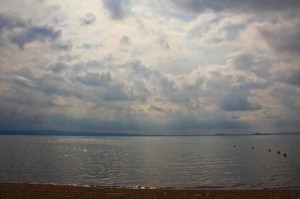
The light and clouds shimmer and shade across Lake Bolsena
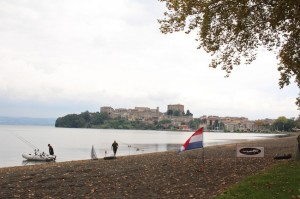
The carp fisherman at work on the shores of Lake Bolsena
After our week in Rome, which we have already shared with you, we headed back out to sea and Sardinia was our next stop.
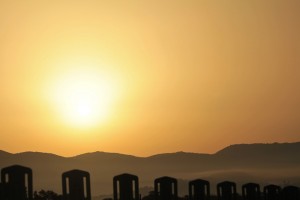
Sardinian sunrise
It was early in the morning when we arrived in Olbia.
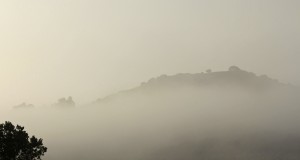
The mountains begin to emerge from the Sardinian mist
We didn’t expect to see flamingos appearing out of the mist, so close to the town. Apparently they really can only eat with their heads upside down!
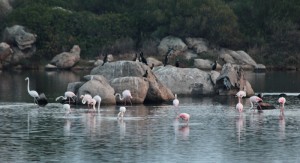
Sardinian flamingos
Sardinia is a huge island, second only to Sicily as the largest in the Mediterranean. It is mountainous, sometimes rather sparse and scrubby, but also rocky and dramatic, with a dark history in parts.
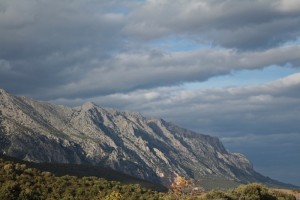
The mountains of Sardinia give great drama to the island
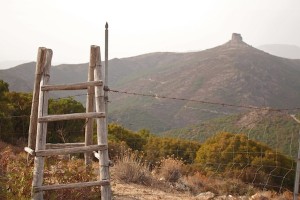
Styles over fences in Sardinia
We spent a fascinating afternoon in Orgosolo, about which we will post a separate story; came across a strange picnic in the woods of people sitting amongst trotting pigs, while chewing on huge lumps of pork;
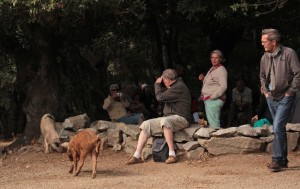
The strange picinic in Sardinia
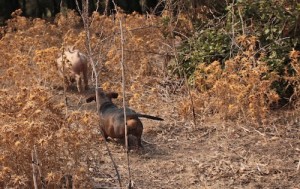
Sardinian sausage dog chases soon-to-be sausage
dodged sheep and cow traffic hazards (again!);
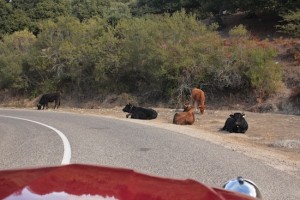
Sardinia is pretty laid back
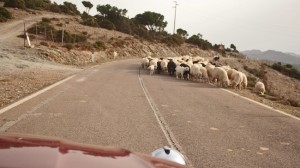
Sardinian sheep dogs do all the work without the shepherds here
but mainly just lazed around the rocky coastline, soaking up the winter sunshine – a lovely holiday from our travelling!
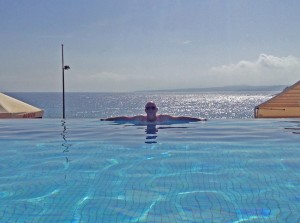
Geoff relaxing in Sardinia
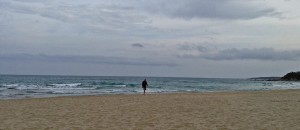
Strolling across a Sardinian beach
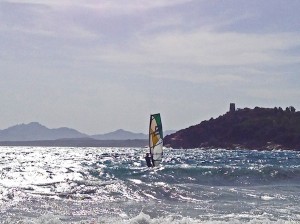
Wind surfing in Sardinia
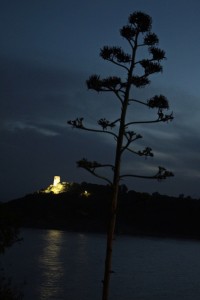
The Sardinian tower across the bay from our campsite at dusk
From Sardinia we struck southward again and are currently enjoying the pleasures of the Amalfi coast, Pompeii and Sorrento – stay tuned for more Italian adventures.

